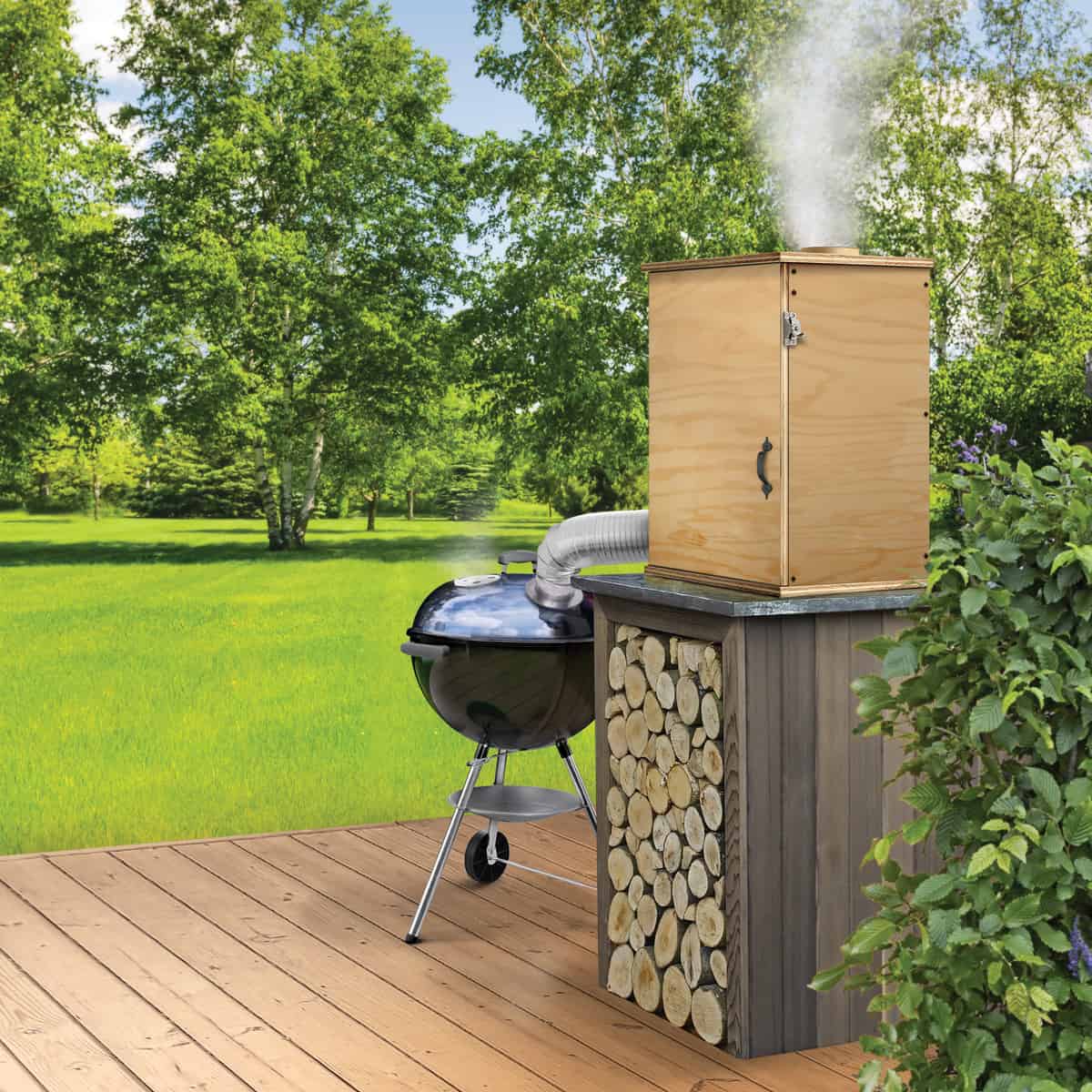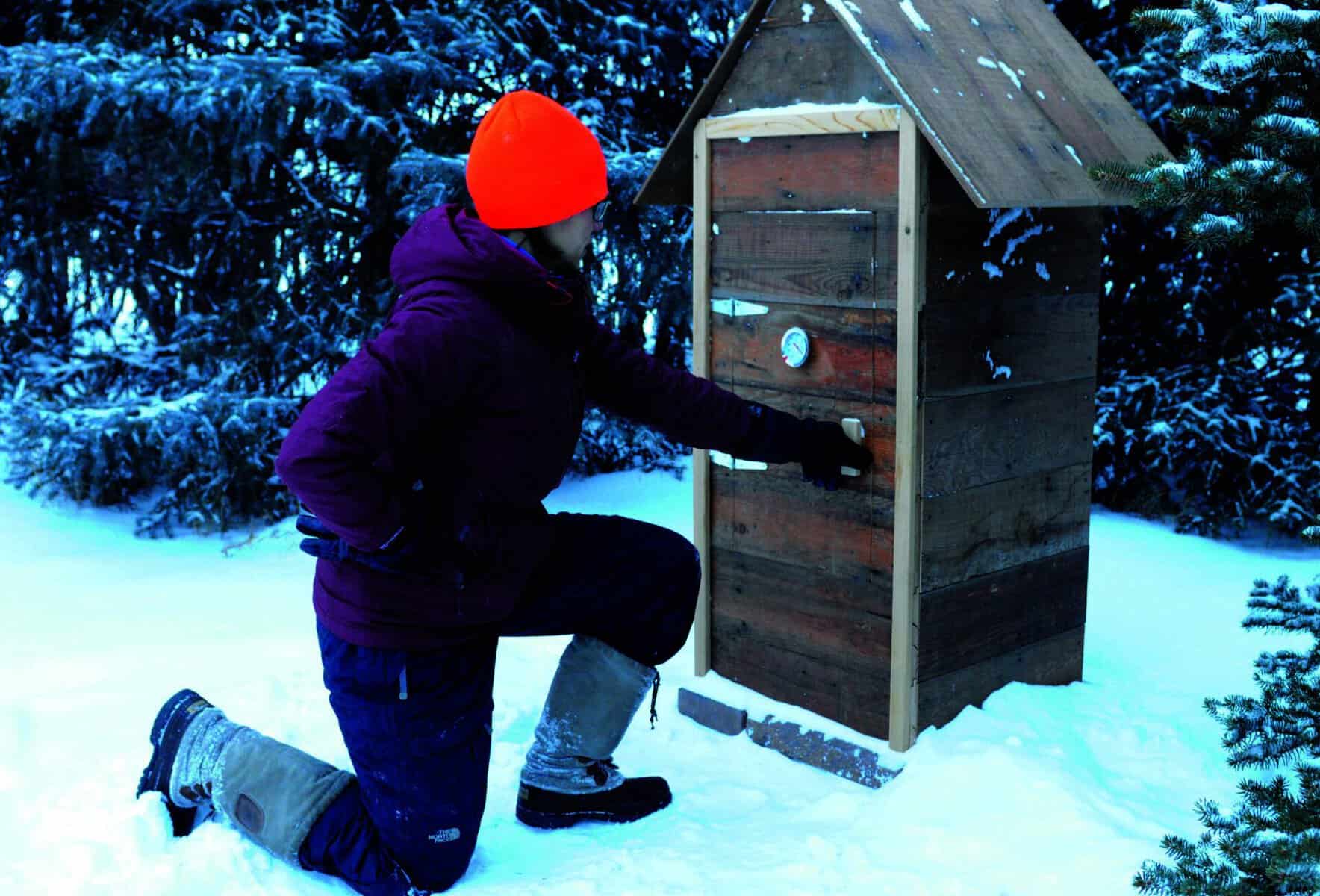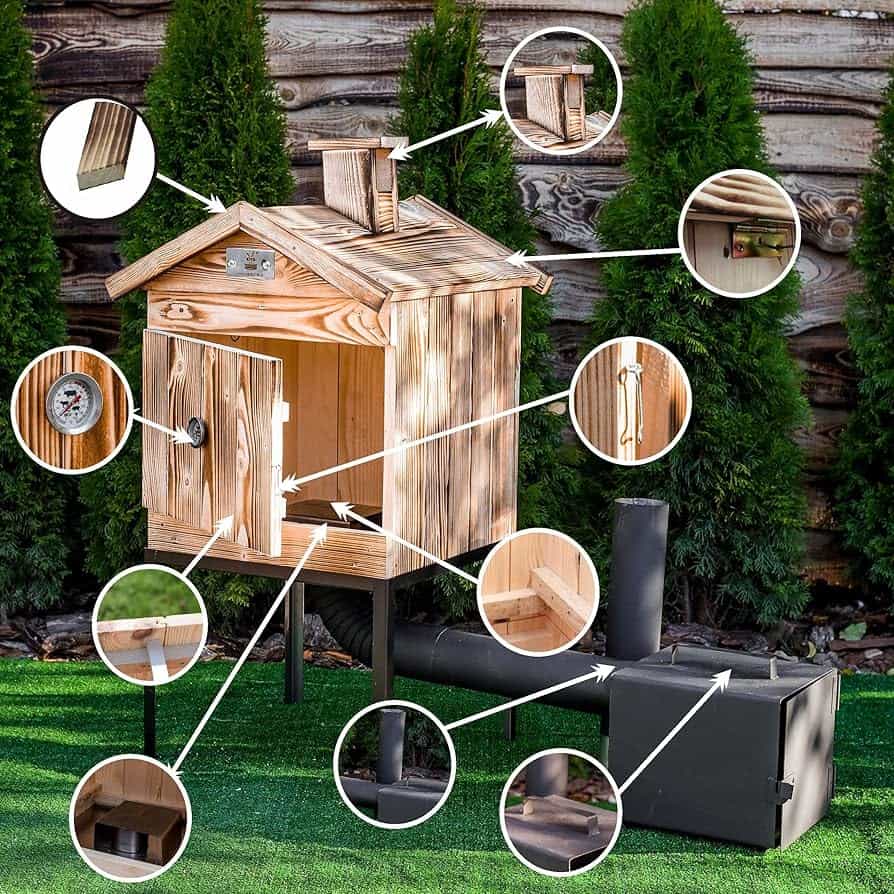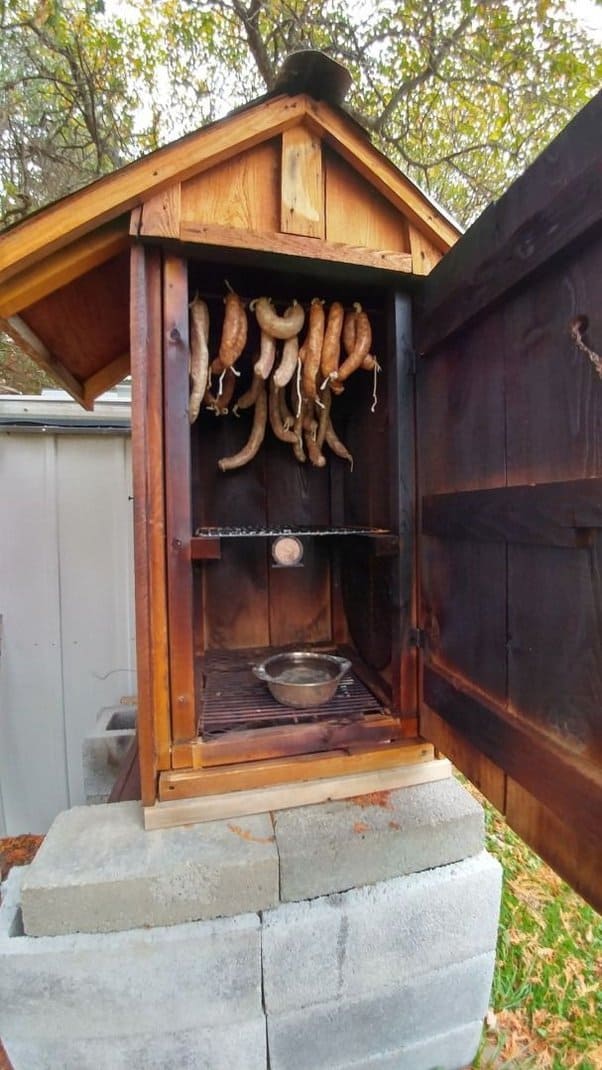Smokin’ Hot: How to Build Your Own Wooden Smoker
How to make a wooden smoker? To make a wooden smoker, build a box-like structure with lumber, add doors, racks, vents, and a heat source like electric elements or charcoal, ensuring safety and ventilation for smoking foods efficiently.
Smoking has been used as a cooking technique for centuries, dating back to ancient civilizations. It was originally developed as a way to preserve food, but over time, it has evolved into a culinary art form. The process of smoking involves exposing food to smoke from burning wood, which imparts a unique flavor and aroma. Today, smoking is not only a method of cooking but also a way to add depth and complexity to dishes.
The appeal of homemade smoked foods lies in the ability to create flavors that are difficult to replicate with other cooking methods. Whether it’s a perfectly smoked brisket, tender ribs, or flavorful salmon, there is something special about the taste of homemade smoked foods. The process of smoking allows for the slow cooking of meats, resulting in tender and juicy results. Additionally, the smoky flavor adds a depth and richness that cannot be achieved through other cooking techniques.
Why Build Your Own Wooden Smoker?
Building your own wooden smoker has several advantages over buying a pre-made one. First and foremost, it is cost-effective. Purchasing a pre-made smoker can be quite expensive, especially if you are looking for a high-quality one. By building your own smoker, you can save money and still achieve excellent results.
Another advantage of building your own wooden smoker is the ability to customize it to fit your specific needs and preferences. You can choose the size and design that works best for you, ensuring that you have enough space to smoke all the foods you desire. Additionally, you can add features such as temperature gauges or adjustable vents to enhance the functionality of your smoker.
Lastly, building your own wooden smoker provides a sense of satisfaction that comes from creating something with your own hands. It allows you to tap into your creativity and craftsmanship while also providing a practical solution for cooking delicious smoked foods.
Materials Needed for Building a Wooden Smoker
To build your own wooden smoker, you will need a few key materials. First and foremost, you will need wood. The type of wood you choose will depend on your personal preference and the availability in your area. Some popular choices for smoker wood include oak, hickory, cherry, and apple. Each type of wood imparts a different flavor to the food, so it’s important to choose one that complements the type of meat or food you plan to smoke.
In addition to wood, you will also need hardware such as screws, hinges, and handles to assemble your smoker. It’s important to choose high-quality hardware that can withstand the heat and elements of smoking. You will also need tools such as a saw, drill, and screwdriver to construct your smoker.
When selecting the right type of wood for your smoker, there are a few things to consider. First, make sure the wood is dry and seasoned. Green or wet wood can produce excessive smoke and result in a bitter taste. Additionally, avoid using wood that has been treated with chemicals or paint, as these can release toxic fumes when heated.
Step-by-Step Guide to Building Your Own Wooden Smoker
Building your own wooden smoker may seem like a daunting task, but with the right instructions and a little patience, it can be a rewarding project. Here is a step-by-step guide to help you get started:
1. Choose the design and size of your smoker. There are many different designs to choose from, including barrel smokers, offset smokers, and box smokers. Consider your cooking needs and available space when selecting a design.
2. Gather all the necessary materials and tools. This includes wood, hardware, and tools such as a saw, drill, and screwdriver.
3. Cut the wood according to the dimensions of your chosen design. Make sure to measure twice and cut once to ensure accuracy.
4. Assemble the main body of the smoker using screws and hinges. Follow the instructions provided with your chosen design, or use your creativity to modify the design to fit your needs.
5. Install any additional features such as temperature gauges or adjustable vents. These can enhance the functionality of your smoker and make it easier to control the temperature.
6. Test the smoker for leaks by filling it with water and checking for any water seepage. If you find any leaks, seal them with high-temperature silicone or gasket material.
7. Season your smoker by heating it up without any food inside. This will help burn off any residual chemicals or odors from the wood and prepare it for smoking.
8. Start smoking! Follow your favorite recipes and smoking techniques to cook delicious smoked foods.
It’s important to keep safety precautions in mind during the building process. Make sure to wear protective gear such as gloves and safety glasses when using tools. Additionally, be cautious when working with fire and hot surfaces, and always follow proper fire safety protocols.
Design Ideas for Your Wooden Smoker
Building your own wooden smoker allows you to get creative and customize the look and feel of your smoker. Here are some design ideas to inspire you:
1. Painted Smoker: Add a pop of color to your backyard with a painted smoker. Choose a color that complements your outdoor space and gives your smoker a unique look.
2. Rustic Smoker: Embrace the natural beauty of wood by leaving your smoker unpainted. This will give it a rustic and organic feel that blends seamlessly with nature.
3. Customized Smoker: Add personal touches to your smoker by engraving or carving designs into the wood. This can be anything from initials to intricate patterns, allowing you to create a one-of-a-kind piece.
4. Smoker with Storage: If you need extra storage space for wood chips, utensils, or other smoking accessories, consider adding shelves or compartments to your smoker. This will keep everything organized and easily accessible.
Tips for Using Your Wooden Smoker
Once you have built your wooden smoker, it’s important to know how to use it properly to get the best results. Here are some tips for using your smoker:
1. Preheat your smoker before adding the food. This will ensure that the wood is producing a steady stream of smoke and that the temperature is stable.
2. Use a water pan to help regulate the temperature and keep the food moist. Fill the pan with water or another liquid of your choice and place it in the smoker.
3. Monitor the temperature throughout the smoking process. Invest in a good quality thermometer to accurately measure the temperature inside the smoker.
4. Avoid opening the smoker too frequently, as this can cause fluctuations in temperature and extend the cooking time.
5. Let the food rest after smoking to allow the flavors to fully develop. This will result in a more tender and flavorful end product.
6. Experiment with different types of wood and smoking techniques to find your favorite flavors and cooking methods.
Choosing the Right Wood for Smoking
The type of wood you choose for smoking can greatly impact the flavor of your food. Here is an overview of different types of wood and their flavor profiles:
1. Oak: Oak is a versatile wood that provides a strong, smoky flavor. It pairs well with beef, pork, and game meats.
2. Hickory: Hickory is known for its strong and bold flavor. It works well with all types of meat, especially pork and poultry.
3. Cherry: Cherry wood adds a sweet and fruity flavor to smoked foods. It pairs well with poultry, pork, and fish.
4. Apple: Apple wood provides a mild and slightly sweet flavor that works well with poultry, pork, and fish.
5. Mesquite: Mesquite is a strong and intense wood that is popular in Texas-style barbecue. It pairs well with beef and game meats.
6. Alder: Alder wood has a mild and slightly sweet flavor that is commonly used for smoking fish.
When pairing specific woods with different types of meat and food, it’s important to consider the intensity of the wood flavor. For example, stronger woods like hickory and mesquite are best suited for robust meats like beef and game, while milder woods like apple and cherry work well with more delicate meats like poultry and fish.
Smoking Techniques for Different Meats and Foods
Different types of meat and foods require different smoking techniques to achieve the best results. Here are some guidelines for smoking various types of meat:
1. Beef: For cuts like brisket or ribs, low and slow is the way to go. Smoke at a temperature of around 225°F (107°C) for several hours until the meat is tender and juicy.
2. Pork: Pork shoulder or ribs can be smoked at a similar temperature to beef, around 225°F (107°C). Cook until the internal temperature reaches 195°F (90°C) for pulled pork or until the meat is tender and easily pulls away from the bone.
3. Poultry: Chicken or turkey can be smoked at a slightly higher temperature of around 275°F (135°C). Cook until the internal temperature reaches 165°F (74°C) for chicken or 175°F (79°C) for turkey.
4. Fish: Fish requires a shorter smoking time at a lower temperature of around 180°F (82°C). Smoke until the fish is opaque and flakes easily with a fork.
In addition to meat, you can also smoke vegetables, cheese, and other non-meat foods. For vegetables, lightly coat them in oil and seasonings before placing them in the smoker. Cheese can be smoked at a low temperature for a short period of time to infuse it with a smoky flavor.
Maintenance and Cleaning of Your Wooden Smoker
To keep your wooden smoker in good condition, it’s important to perform regular maintenance and cleaning. Here are some tips:
1. Clean the smoker after each use to remove any food residue or ash. Use a brush or scraper to remove any stuck-on debris.
2. Empty and clean the water pan after each use to prevent bacteria growth.
3. Check for any signs of wear or damage, such as loose screws or cracks in the wood. Repair or replace any damaged parts as needed.
4. Store your smoker in a dry and covered area to protect it from the elements.
5. Season your smoker periodically to maintain its performance and prevent the wood from drying out.
Troubleshooting Common Issues with Wooden Smokers
While building and using a wooden smoker can be a rewarding experience, there are some common issues that can arise. Here are some tips for troubleshooting these issues:
1. Temperature Fluctuations: If you are experiencing temperature fluctuations, check for any leaks in the smoker. Seal any gaps or cracks with high-temperature silicone or gasket material.
2. Excessive Smoke: If your smoker is producing excessive smoke, make sure you are using dry and seasoned wood. Wet or green wood can produce too much smoke and result in a bitter taste.
3. Uneven Cooking: If your food is cooking unevenly, make sure the temperature is consistent throughout the smoker. Use a good quality thermometer to monitor the temperature and adjust as needed.
4. Ash Buildup: If you notice a buildup of ash in your smoker, clean it out regularly to prevent airflow restrictions and ensure proper ventilation.
Conclusion: Enjoying Your Homemade Smoked Delicacies
Building and using a wooden smoker allows you to tap into the art of smoking and create delicious homemade smoked foods. The process of smoking adds depth and complexity to dishes, resulting in flavors that are difficult to replicate with other cooking methods. By building your own smoker, you can save money, customize the design to fit your needs, and experience the satisfaction of creating something with your own hands.
With the right materials, tools, and techniques, you can build a wooden smoker that will provide years of enjoyment and delicious meals. Experiment with different types of wood and smoking techniques to find your favorite flavors and cooking methods. Whether you’re smoking a brisket, ribs, poultry, fish, or vegetables, the art of smoking allows you to elevate your culinary skills and create memorable dining experiences. So fire up your smoker, embrace the smoky aroma, and enjoy the fruits of your labor.
Originally posted 2024-02-07 01:27:44.




